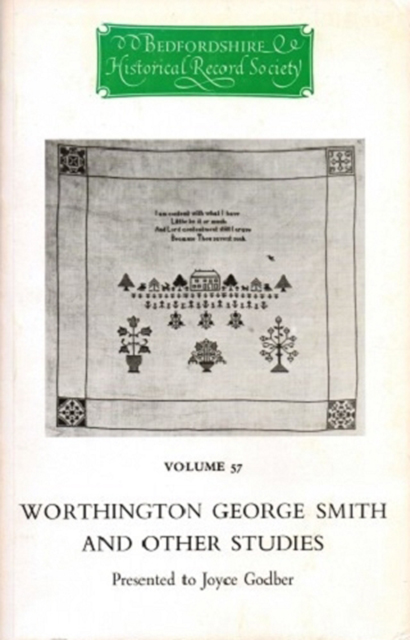Book contents
- Frontmatter
- Contents
- Contributors
- Illustrations
- Foreword
- Bedfordshire Chapelries: An Essay In Rural Settlement History
- Bedfordshire Heraldry: A Conspectus
- Middlemen In The Bedfordshire Lace Industry
- Joshua Symonds, An Eighteenth-Century Bedford Dissenting Minister
- The 1830 Riots In Bedfordshire - Background and Events
- A Bedfordshire Clergyman of The Reform Era and His Bishop
- Worthington George Smith
- Aspects of Anglo-Indian Bedford
- The 1919 Peace Riots In Luton
- Index
- Miscellaneous Endmatter
Middlemen In The Bedfordshire Lace Industry
Published online by Cambridge University Press: 03 August 2023
- Frontmatter
- Contents
- Contributors
- Illustrations
- Foreword
- Bedfordshire Chapelries: An Essay In Rural Settlement History
- Bedfordshire Heraldry: A Conspectus
- Middlemen In The Bedfordshire Lace Industry
- Joshua Symonds, An Eighteenth-Century Bedford Dissenting Minister
- The 1830 Riots In Bedfordshire - Background and Events
- A Bedfordshire Clergyman of The Reform Era and His Bishop
- Worthington George Smith
- Aspects of Anglo-Indian Bedford
- The 1919 Peace Riots In Luton
- Index
- Miscellaneous Endmatter
Summary
ENGLISH LACE
Lace became a fashionable decorative fabric in its own right in the second half of the sixteenth century. There were two kinds: one made with the needle which had developed from cut and openwork embroidery; the other made by weaving and plaiting linen threads which had grown from the narrow braids used to fasten parts of dress together. The first type is needlepoint lace, the second bobbin, or as the early makers in England called it, bone lace. The early forms of both needlepoint and bone lace appear in simple ornamental edgings and insertions before it flowers into the elaborate, decorative and costly fabric which appears in profusion in the portraits of the later sixteenth century. The laces of Italy, both needlepoint and bobbin, and later the laces of Flanders were the first demand of the fashionable world, but by the end of the sixteenth century there is evidence of lace being made in England and of the beginnings of an English lace industry.
Although some needlepoint lace was made in England it was bobbin lace which became an industry, concentrated in two main areas in the country, in the south-west in Devon and in the East Midland counties of Bedfordshire, Buckinghamshire and Northamptonshire. The techniques used differ in the two areas. In Devonshire lace the pattern is worked first and then, as a separate operation, its different parts are linked together with bars on a mesh ground; this was the method of the Italian bobbin lace of Milan and, in Flanders, of Brussels. Lace made in the East Midlands was worked as a continuous fabric in a single operation; the method of the Italian bobbin lace of Genoa and the Flemish laces of Antwerp, Valenciennes, Mechlin and Lille.
LACEMAKING APPEARS IN BEDFORDSHIRE
There were by the end of the sixteenth century many lacemakers in London, some of them refugees from the religious persecution in the Low Countries, working and trading as individual craftsmen and craftswomen in the city. Lacemaking also appeared at this time as a domestic craft, practised by women, either as a domestic accomplishment to supply family and household needs, or as a means of livelihood.
- Type
- Chapter
- Information
- Worthington George Smith and Other Case Studies , pp. 31 - 58Publisher: Boydell & BrewerFirst published in: 2023



